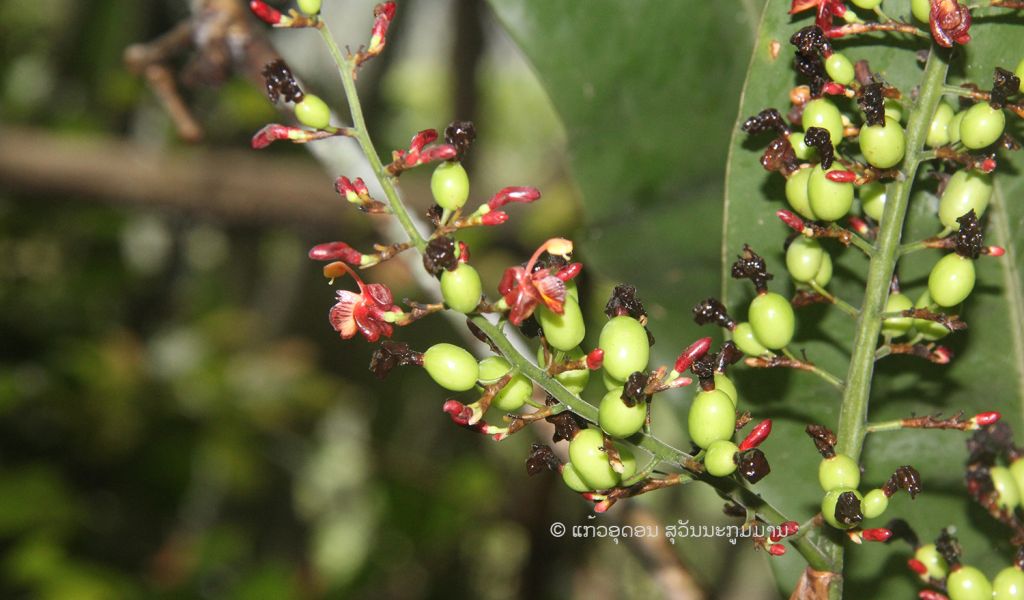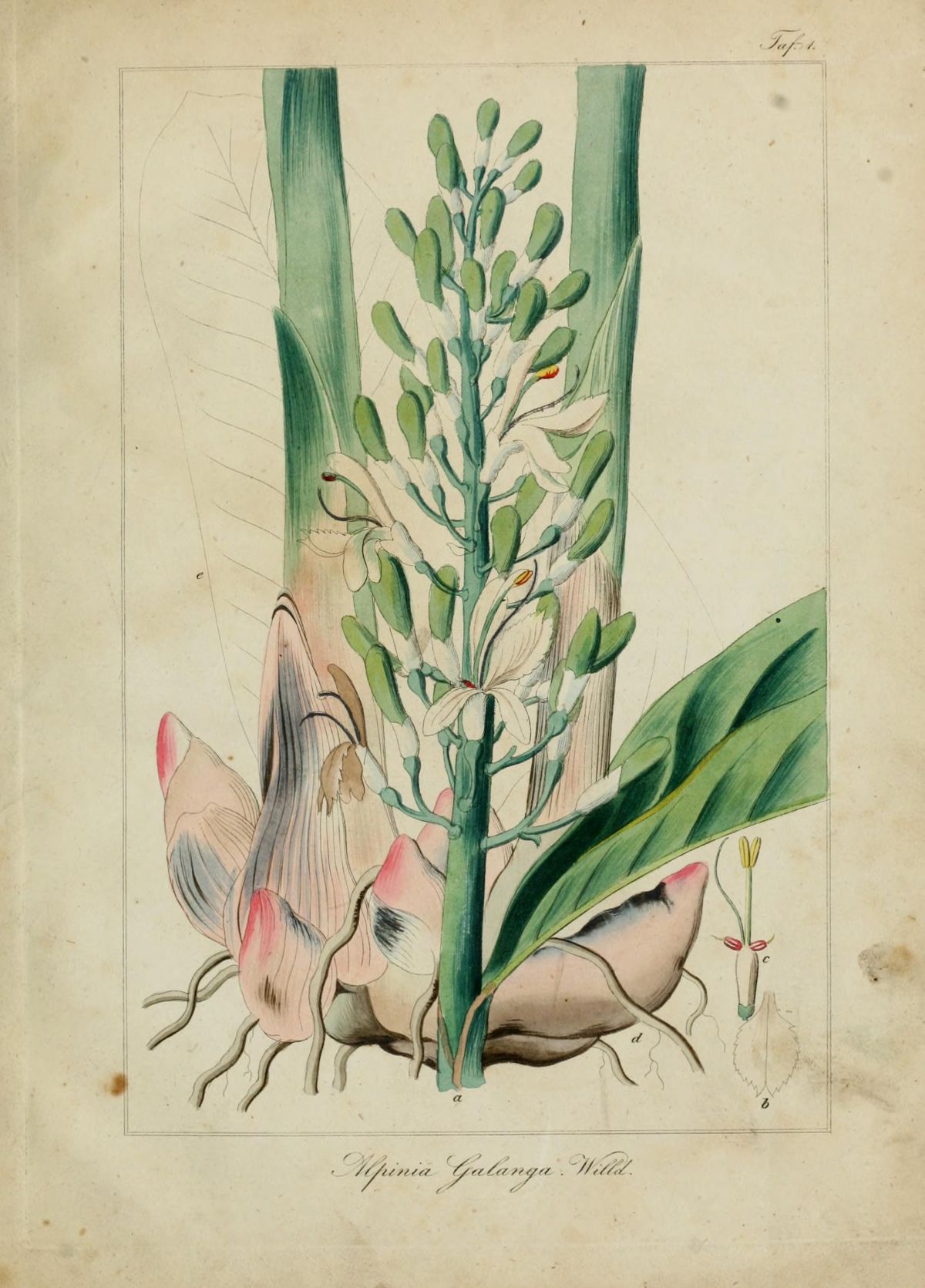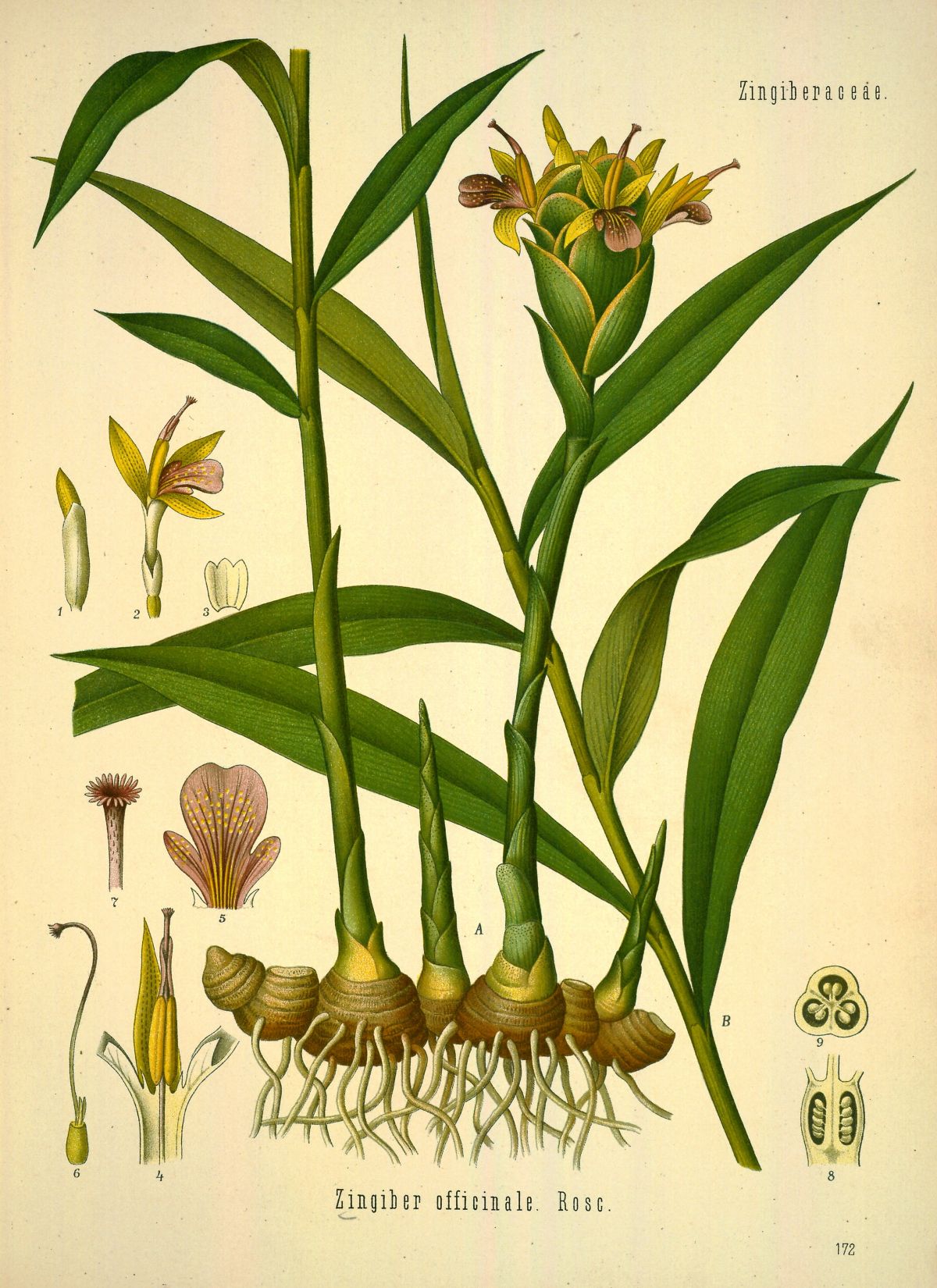Traditional Uses of Zingiberaceae species in Lao Society

Introduce: Terminology of Zingiberaceae species in Lao. In Laos, Zingiberaceae species are divided into different categories. Therefore the terms for each species vary according to its use by the Lao people.
Gingers in daily use (alimentary or medicinal) include four species:
1. khing refers to Zingiber species
2. kha to Alpinia species
3. khi min to Curcuma species
4. mak naeng or naeng to Amomum species.
In some cases, Globba species are listed under the Lao term ‘naeng’ or ‘khing’, respectively referring to the Amomum and Zingiber species. Although this is the term used in the local language, it does not correspond to the scientific classification. Another term employed is ‘euang’, applied to the orchid family as well as to some edible gingers species as ‘euang na’ (Costus specious). More generally, the term ‘van’ includes plants that are considered to have a magical effect which applies to many Zingiberaceae species. Unlike the four ginger species mentioned above, which relate to the non-religious sphere, the ‘van’ has a magic connotation, it belongs to the spirit world, and is sometimes inhabited by a spirit that has to be worshipped.
Traditional use of Zingiberaceae species in Laos
Gingers species in Laos have five main uses:
1. Alimentary use
2. Medicinal treatment
3. Other common use
4. Ritual ceremonies
5. Magical use
1. Alimentary use
Unlike inhabitants of neighboring countries, traditional Lao cooking does not make much use of Zingiberaceae species. Species for culinary use are mainly limited to the ginger (Zingiber officinale) and the galanga (Alpinia galanga, Alpinia conchigera), whose roots are used in sauces, soups, etc.
As well as other gingers such as cardamom (Amomum), galanga (Alpinia bracteata), Ginger (Zingiber cassumunar, Zingiber zerumbet, Zingiber rubens, Zingiber mekongense) and Costus species, their flowers, buds or leaves are consumed either steamed or grilled and served as an accompanying dish.
In some other species, such as Amomum, the seeds are sucked as sweets for their refreshing and perfumed effects after meals, or sometimes added to the traditional betel-nut chewing.

2. Medicinal treatment
The medicinal properties of ginger species are well-known among traditional societies. As far as the Lao pharmacopeia is concerned, gingers are categorized as a “hot” remedy and are frequently used in daily decoctions for fever, rheumatism, headache, stomach ache. Each species has its own specificities:

• Alpinia species
Among the Alpinia species, the Alpinia bracteata is used to treat intestine diseases and rheumatism, the Alpinia conchigera is part of the composition of a treatment to fortify women after childbirth, the Alpinia galanga is known to cure stomach ache as well as itching. In some ethnic groups in Laos, women would only eat grilled rhizomes of Alpinia galanga with sticky rice and grilled salt during the 15 days after childbirth.
• Zingiber species
The Ginger species include Zingiber zerumbet which is used to treat fever, infant constipation, and more generally digestive system-related ailments, as well as skin diseases. Zingiber cassumunar is a medicine to cure diarrhea and abscess, Zingiber cassumunar serve as an antidote against poison caused by the absorption of other ‘van’.
• Curcuma species
Curcuma species such as Curcuma longa or Curcuma singularis are commonly used for stomach treatment, as an antidote against food poisoning and Curcuma aromatica is used to cure arthritis.
• Amomum species
According to traditional medicine, Amomum species are generally used to treat stomach and intestine diseases.
• Other Zingiberaceae species
Other species include Kaempferia parviflora, Kaempferia galanga used to cure headache, kidney and nervous system diseases, Kaempferia rotunda to treat female sterility, Kaempferia laotica to treat injuries and skin diseases, Boesenbergia rotunda is known for its energy-boosting properties. Hedychium coronarium is used to treat swelling. While Globba schomburgkii is used to treat fever, Globba calophylla is given as an energy-booster to women after childbirth.
3. Other common use
Skin treatment: During the 19thcentury, a French traveler mentioned the “golden” skin of women on their way back from bathing. It was actually a traditional habit for Lao women to rub their bodies with Curcuma longa as skin protection. In another field, when monastery drums were built, the traditional technique to treat the cow skin in order to remove its tallow smell was to rub it with different kinds of Zingiberaceae, notably Curcuma longa, Zingiber cassumunar and Zingiber zerumbet.
Natural dye: Curcuma longa was also used as a natural dye, notably for the monk’s robes.
4. Ritual ceremonies
As it has been influenced by different cultures, the Lao society has integrated various ginger species into its ritual and worship practices. For instance, as an offering to the spirits, Zingiber zerumbet symbolizes silver and Zingiber officinale or Curcuma longa represents gold.
The composition of the water used to sprinkle images of the Buddha consists of chopped Kaempferia galanga roots and leaves and Curcuma longa roots mixed into the water in order to perfume and give it its sacred properties. Ground Kaempferia galanga and ground Curcuma longa are also part of the composition of the traditional incense sticks used in temples. In Northern Laos Hedychium coronarium and Globba schomburgkii flowers are offered with a pair of candles wrapped into a banana leave cone to worship the Buddha, especially during Buddhist festivities. The Lu ethnic group in particular, make lots of offerings of Globba schomburgkii flowers during celebrations such as Vessantara or the festival of Xieng Tung stupa in Muang Sing.
5. Magical use
Ginger species for magical use are given the specific name of ‘van’ which indicates their magical nature. Some of them are used in the preparation of charms, such as Kaempferia angustifolia, others such as Zingiber cassumunar, serve to thwart the charm.
Most of the van belonging to the Zingiberaceae family have a medico-magical use, and as magic plants, some of them are submitted to particular rites of plantation and harvest. For instance, Stahlianthus thorelii used to cure intestine and stomach diseases is planted on a Tuesday in the 6th month of the lunar calendar, and is also harvested on a Tuesday in the 12th month of the lunar calendar. Iron instruments are banished for harvesting, only wooden instruments are allowed. If the sick person is a man, the harvest should be done by a woman, and vice versa. Harvesting has to begin with offerings to the spirit of the van.
Due to the magic power conferred on certain gingers, traditional belief forbids their cultivation in the area of the house or its immediate surroundings. Instead, they are found in their natural environment, sometimes growing in specific places such as graveyards, which strengthen the belief in the magical virtues attributed to them.
Conclusion
In conclusion, although only a few varieties of ginger species are used in traditional Lao food, the ginger family is useful to society and is widely used in medicine, healing and also plays an important role in beliefs and in performing rituals.
References
Jules Vidal (1959). Noms vernaculaires de plantes (lao, mèo, kha) en usage au Laos. Bulletin de l’Ecole Française d’Extrême-Orient, t. 49, n° 2, 1959, p. 435-608.
Jules Vidal (1960). Les Plantes utiles du Laos. Journal d’agriculture traditionnelle et de botanique appliquée, vol. 7, n° 9-10, 1960, p. 417-440.
Citation: Manisamouth Ratana Koumphon (2021). Traditional Uses of Zingiberaceae species in Lao Society. www.phakhaolao.la [Lao Agrobiodiversity Platform]. (date access xxxxxx).
